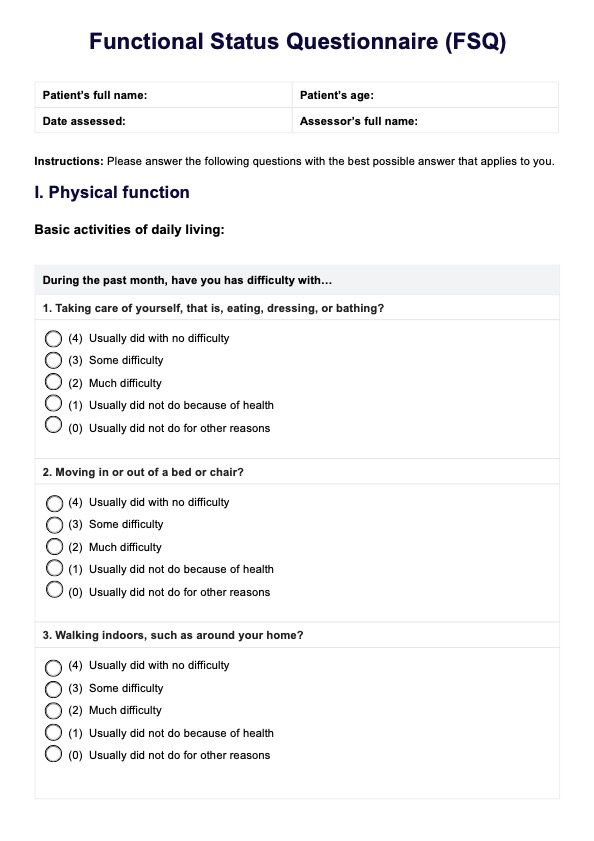No. Under no circumstance should you use this as a diagnostic tool because it's just a general questionnaire. While it zooms into different aspects of a person's life, it doesn't exactly cover nuances that might need to be covered. After interpreting the results, it's best to have patients undergo further examinations and an official diagnosis. A truly comprehensive functional assessment requires more than just one assessment tool.

Functional Status Questionnaire
Assess your patient's disabilities related to their functional status by using the Functional Status Questionnaire!
Functional Status Questionnaire Template
Commonly asked questions
You must reduce the number of questions in a section of the equation. For example, if one segment has five questions and the patients didn't answer one, then the number of questions should be 4. It would be best to encourage your patients to answer all questions for the best possible results.
If the patient hasn't been employed for over 31 days prior to being assessed, you don't need to have them answer the section on work performance and don't have to include it as part of the score.
EHR and practice management software
Get started for free
*No credit card required
Free
$0/usd
Unlimited clients
Telehealth
1GB of storage
Client portal text
Automated billing and online payments











